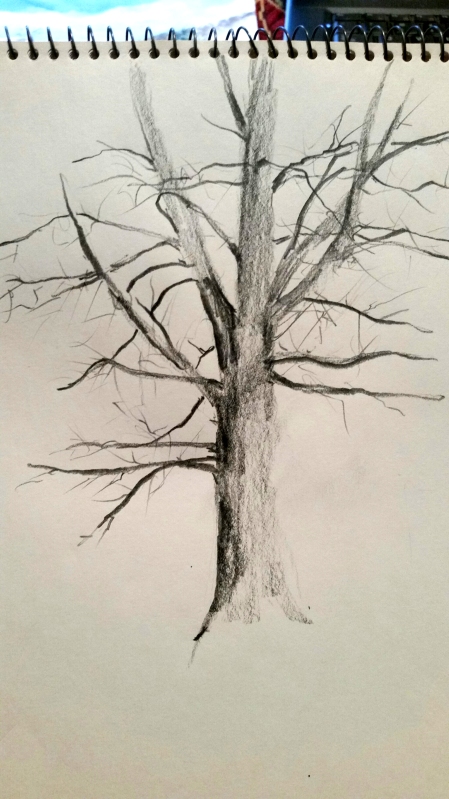
Newman chose his terms ever so deliberately: “plasma” (or “plastic”) connotes an organic fluidity; it also suggests the more familiar word “plastic,” which refers to an organic quality in materials. Semantically, “plasmic” and “plastic” are closely related (they derive from the Greek word for molding or forming); but they are also inversions of one another, with the one term oriented to living organisms and the other to inert matter. Simply put, the plasmic is lively and active (like the movement of thought, it gives form to things), whereas the plastic is passive (it is the form that thought and other forces produce). The various drafts of “The Plasmic Image” explore the links between “plasmic” and “plastic,” between creative thought and the material form it can assume. Newman’s guiding metaphor is this: plasma, as the fluid part of the body communicates thought. Thus the plasmic and the plastic bond together whenever “the new painter is concerned with his subject matter, with his thought”.
Richard Shiff, Introduction to Barnett Newman: Selected Writings and Interviews
Countless times while posting on my blog, I feel that I am wearing my underwear on the outside. This is one of those moments. I love reading artist’s writings about the task of making art. Robert Motherwell has been a favorite of mine for years, and now, one of his contemporaries, Barnett Newman has crossed my desk. A former student of mine, Ian Watson, now a serious painter pursuing a path that has issued from his serious study of Abstract Expressionism, has passed on to me this book on Newman’s writings. Though my painting style is nowhere near the Abstract Expressionists, the more serious thinkers among them engage my mind in the most satisfying way. I don’t feel that I have a clear-cut aesthetic theory of art, or even a style for that matter. I love the process of making art, and love reading the thoughtful writings of artists who engage in that same enterprise, always hoping one day I will figure out what I am trying to do and express it well.
Finishing my term as Artist-in-Residence day before yesterday has yielded an experience similar to jumping into a warm pond after emerging from a sauna. Yesterday, back home for the first time, I spent the day in galleries and museums, searching for some kind of direction of where to go next in my work. I enjoyed the museum time, but nothing really clicked with my own work. I had trouble going to bed last night, finally succumbing at 2:00 a.m. Waking at 8:00, groggy, I made coffee, built a fire (wow, a delightful 43 degrees outside!), settled into my reading chair before the fireplace, and read extensively from Thoreau’s journals and Barnett Newman’s writings. Coming across the introductory quote posted above, I thought about that conflict between the artist’s mind and the materials s/he is trying to manipulate, and I looked up at this watercolor I started last year and abandoned.
The painting is of a section of bluff carved out by Highway 30 west of High Ridge, Missouri. I drove through that section last Thanksgiving on a dreary rainy morning, en route to my Texas home. I was so taken by the soaked landscape under the dark morning skies that I turned my vehicle around, drove back, got out in the rain and took several photos.Once I got home I began the painting enthusiastically, but nothing seemed to go right. I tossed it aside and forgot about it. Once I found it again this year, and wished to give it another try, I could not find my reference photos among my computer files. I wasted almost an entire Saturday morning looking for them. Disgusted, I put the watercolor next to the fireplace and went on with my life. Then, I came across the photos just before leaving on Spring Break for Corpus Christi. I thought about this painting the entire time I was on the coast.
Reading the comments on Newman’s theory jolted me and I returned to the drafting table. I love the slice of landscape I viewed that morning, and have re-visited countless times in my mind’s eye. And this morning, I decided to push my mind and imagination harder against the resistant colors and shapes to see if I could wrest some kind of pleasing composition from it. I keep working back and forth between the complementary violets and yellows as well as the greens and reds. And, as many times before, I am lost in the network of winter tree limbs that trace out a labyrinthe against the sky. I purchased an atomizer from Asel Art yesterday (I lost mine from 1974!) and sprayed some Hydrus liquid watercolor across certain areas. I feel like a small child in the classroom, but that is O.K. I’m back to the joy of discovering new artistic possibilities and am enjoying this ride in particular.
Thanks for reading.
I paint in order to learn.
I journal when I feel alone.
I blog to remind myself that I am not alone.













